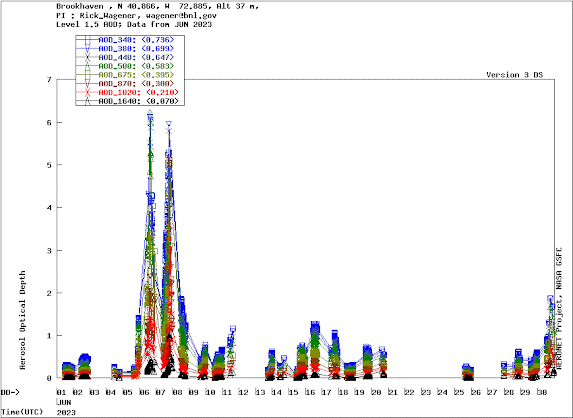Every few years or so, you’ll hear or read in the news that the Earth is entering what is called an El Niño event. What exactly does that mean, and how are El Niño events like the one in its early stages now linked to global climate?
In the eastern tropical Pacific Ocean, warm surface water is normally blown westward by the trade winds, allowing colder water to rise up to the surface. Periodically this motion and the corresponding upwelling get stronger. But equally periodically the motion and upwelling get suppressed, and the eastern Pacific gets unusually warm. The Spanish settlers in Peru observed unusual warm spells around Christmas time due to these events, and called them “El Niño” in honor of the baby Jesus. The other end of the cycle would eventually get called “La Niña.” The scientific community eventually spotted a correlation between El Niño and La Niña events and a previously observed cycle of air pressure variation in the South Pacific called the Southern Oscillation. As a result, scientists typically refer to the phenomenon as the “El Niño Southern Oscillation,” or ENSO for short. The National Oceanic and Atmospheric Administration, or NOAA, quantifies this phenomenon using a number of different factors in the form of a number called the multivariate ENSO index (MEI). This number is positive during El Niño events and negative during La Niña events. Figure 1 shows the plot of the index vs. time since 1980. There were particularly strong El Niño events in 1998 and 2016. A prolonged La Niña event lasting over three years ended in early 2023, but now the cycle has finally reversed and an El Niño event is gathering momentum.
Figure 1: NOAA's multivariate ENSO index plotted vs. time.
El Niño events are well known for their ripple effects that spread across the globe. Southern California typically gets quite a bit more rain during an El Niño event than it normally gets, for example. Hurricane activity, in terms of both frequency and magnitude, typically intensifies in the Pacific and dampens in the Atlantic during an El Niño event. The last strong El Niño in 2016 produced a hurricane in the Pacific whose maximum sustained winds exceeded 200 mph, a first among recorded storms. And during a La Niña event, these hurricane patterns are reversed. But the ENSO cycle produces a “big picture” effect as well. The cold water that normally upwells to the surface in the eastern tropical Pacific cools the air above it, but the suppression of this upwelling during El Niño means that the sea surface is warmer than normal. This warms the air above it, causing a significant increase in tropical air temperatures which then spreads globally. As a result, global mean temperatures tend to be warmer than normal during El Niño events and colder during La Niña events.
This can be observed in global temperature records. Figure 2 shows the seasonally averaged global mean temperatures from the NASA/GISS dataset. Most years that break a temperature record are years with El Niño events, and most years with relatively low temperatures (excepting major volcanic eruptions) are years with La Niña events. The ENSO cycle is in fact the dominant source of short-term natural variability in the temperature record, greatly surpassing the variability due other factors like incoming solar radiation. Failure to account for this phenomenon, whether through an honest misunderstanding or willful misrepresentation, has led to poor interpretations of the temperature record in the recent past. After the exceptionally strong El Niño in 1998, for example, La Niña events dominated the cycle for more than fifteen years and it took until 2014 for global mean temperatures to unequivocally exceed the 1998 peak. This led many people to proclaim some variant of “global warming stopped in 1998,” or “global warming went on hiatus,” but the updated temperature record clearly shows that didn’t happen. Besides, the extra upwelling of cooler water in the eastern tropical Pacific during La Niña events leads to extra downwelling of warm ocean water in other locations. This warm water carries some of the Earth’s additional heat down with it. And last time I checked, the oceans were part of the globe.
Figure 2: The seasonal means in the NASA/GISS temperature record, both globally (top) and in the tropics (bottom).
Since the really strong El Niño of 2016 and the corresponding sharp peak in global mean temperatures, the La Niña events have again dominated. This has temporarily kept global mean temperatures from shooting past our previous record high, but now the cycle has reversed. We are seeing significant heat waves over much of the world, a number of days in July have set and reset the bar for the warmest day ever recorded, and July is likely to end up hotter than any other month on the record. There is a real possibility that 2023 will be the warmest year on record, despite a fairly cool start. And the El Niño event is just getting started. A strong enough El Niño could even push global mean temperatures temporarily more than 1.5ºC above pre-Industrial levels, a threshold which adherents to the 2015 Paris Agreement promised to try to avoid.
To summarize, the global temperature effects of the ENSO cycle oscillate around the increasing trend due to greenhouse gases. What we’re seeing now isn’t the new normal — yet — but the 2016 El Niño made the 1998 temperature peak look cool in comparison, and we need to face the very real possibility that the next big El Niño after this one will make this summer seem cool.
(For updates on new posts, please click the "Follow" button.)




